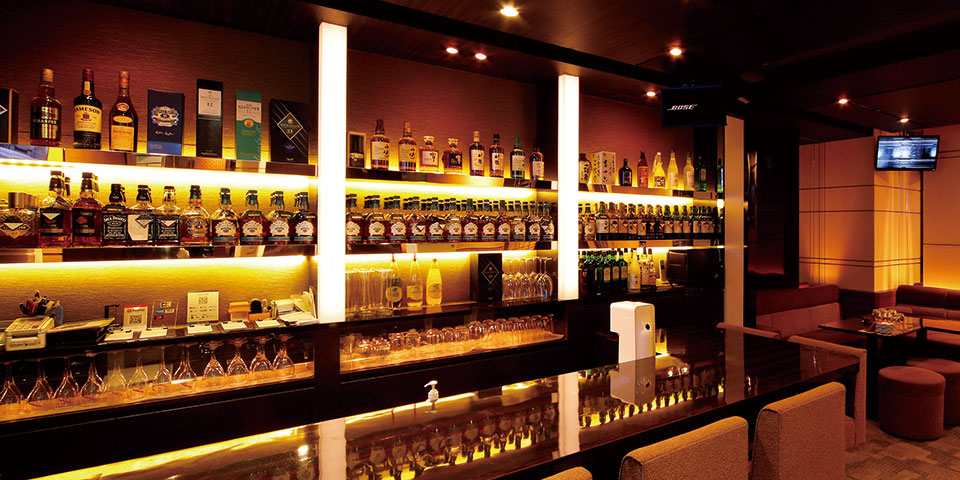What’s a Snack Bar?
In the entertainment districts, a “snack” bar is an establishment where a woman called “Mama” serves customers from behind a counter. Usually, Mama is the owner of the establishment. Some bars are operated solely by Mama, while others have several hostesses. These bars have counter seats and sofa seats called “boxes,” where patrons can enjoy drinks and conversation with Mama or the hostesses across the counter. Hostesses also serve customers at box seats, sitting opposite the patrons. This seating arrangement ensures that the service provided does not qualify as entertainment service, which would require a specific license under the adult entertainment law. However, the distinction between service and entertainment is often ambiguous and falls into a gray area. Some establishments openly operate with the required license. In Susukino, snack bars typically operate from 8:00 PM to 1:00 AM. The clientele primarily consists of male office workers aged 30 to 60. It's common for patrons to visit a snack bar for a second round of drinks after having yakitori or oden at the first venue. Snack bars serve as a place for these working men to unwind, share complaints with Mama, discuss future dreams with colleagues, and socialize with regulars.

Etymology
The term “snack” originates from “snack bar.” In English, a snack is a light meal, so a bar where light meals are served is called a “snack bar.” The term gained popularity around 1959 when the adult entertainment law was amended, and regulations on establishments offering entertainment services, such as cabarets and clubs, became stricter. To emphasize that they were food and drink establishments offering light meals, these bars adopted the name “snack bar.”
Number of Establishments
By prefecture Tokyo has the most snack bars, followed by Hokkaido, Fukuoka, Osaka, and Kanagawa. However, on a per capita basis Miyazaki Prefecture ranks first, followed by Aomori, Okinawa, Nagasaki, and Kochi. The number of snack bars declined after the economic bubble burst in the early 1990s, but they never disappeared because a single Mama could run a bar and customers could enjoy the experience at a low cost. In the 2000s, with continued deflation and an increase in vacant rental spaces, lower rent made it easier for snack bars to open. The sense of security in pricing and the generational shift in Mamas, leading to younger owners, contributed to a resurgence in popularity and the number of snack bars increased again. The COVID-19 pandemic in 2020 severely impacted snack bars, as emergency declarations and preventive measures hindered regular operations. However, many bars managed to survive with government support and aid from regular customers. The number of snack bars has reportedly recovered to pre-pandemic levels, with an estimated total of over 100,000 across the country.
Pricing System
Small dishes and snacks called “charm” are automatically served, often listed on menus as a “charm charge.” In Susukino, charm charges typically range from 3,000 to 5,000 yen. While drinks can be ordered by the glass, regular customers often keep their favorite whiskey or shochu bottles at the bar, a system known as “bottle keep.” The price of keeping a bottle varies significantly depending on the brand, usually around three to four times the retail price. It's important to note that customers must pay separately for drinks ordered by Mama or the hostesses. Recently, many bars offer all-you-can-drink plans, typically costing 4,000 to 6,000 yen for 60 minutes. These plans often include drinks for the hostesses as well. When visiting in groups, patrons usually opt for all-you-can-drink plans, with many bars accommodating specific drink requests and pricing. Karaoke is typically free, but monopolizing the microphone is frowned upon, so patrons should be considerate and enjoy responsibly.
